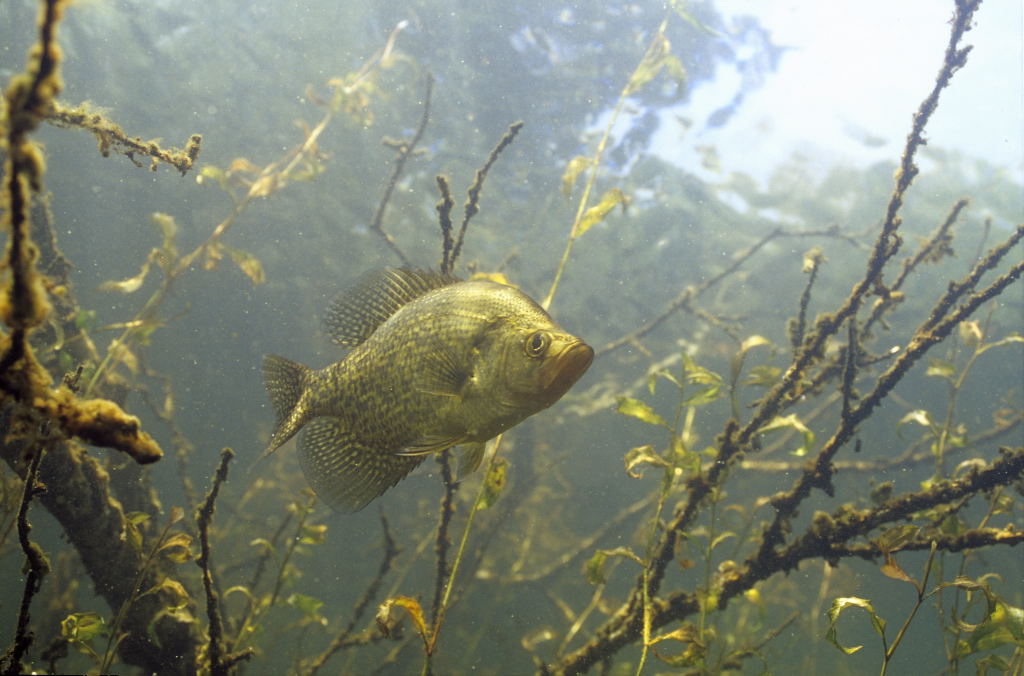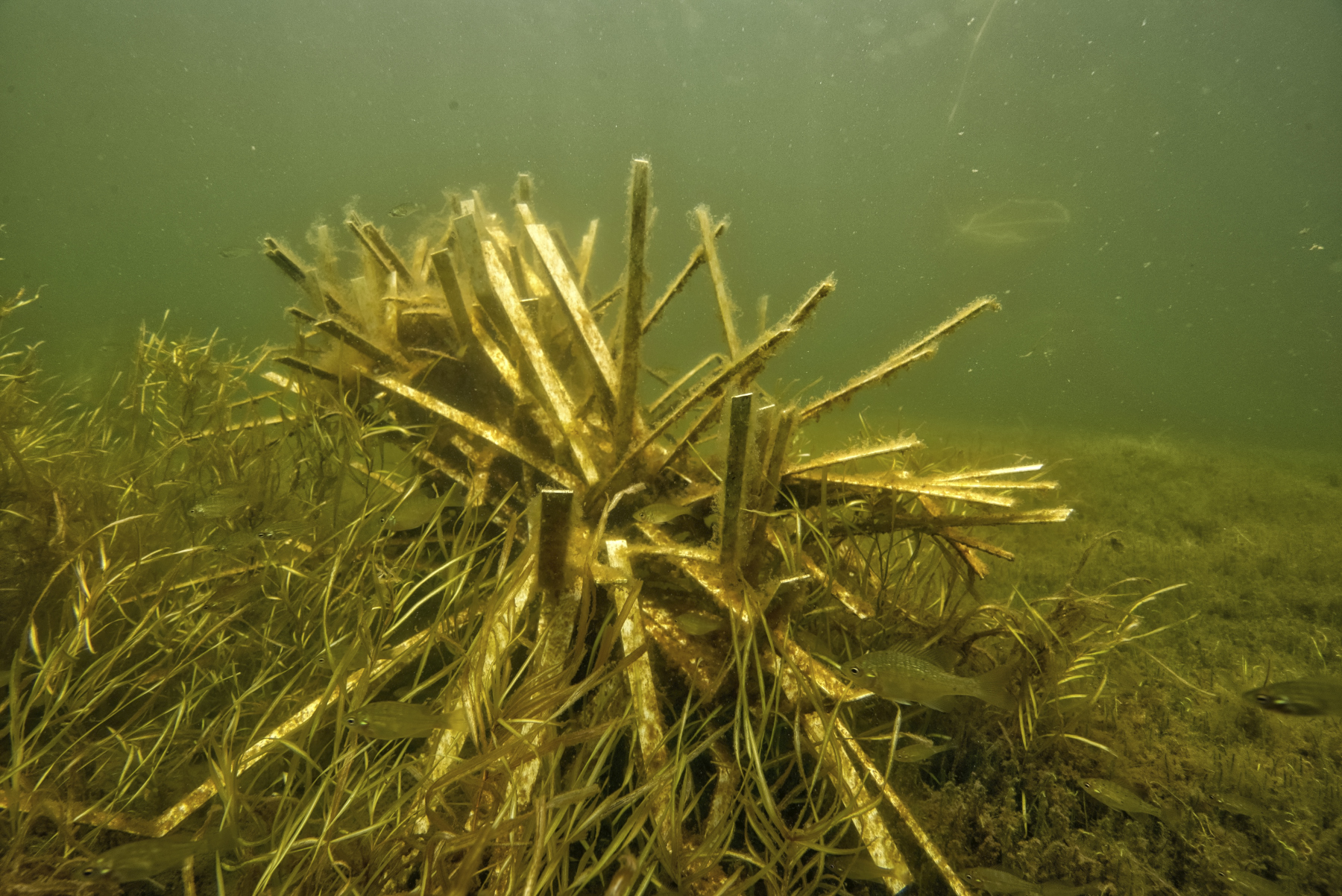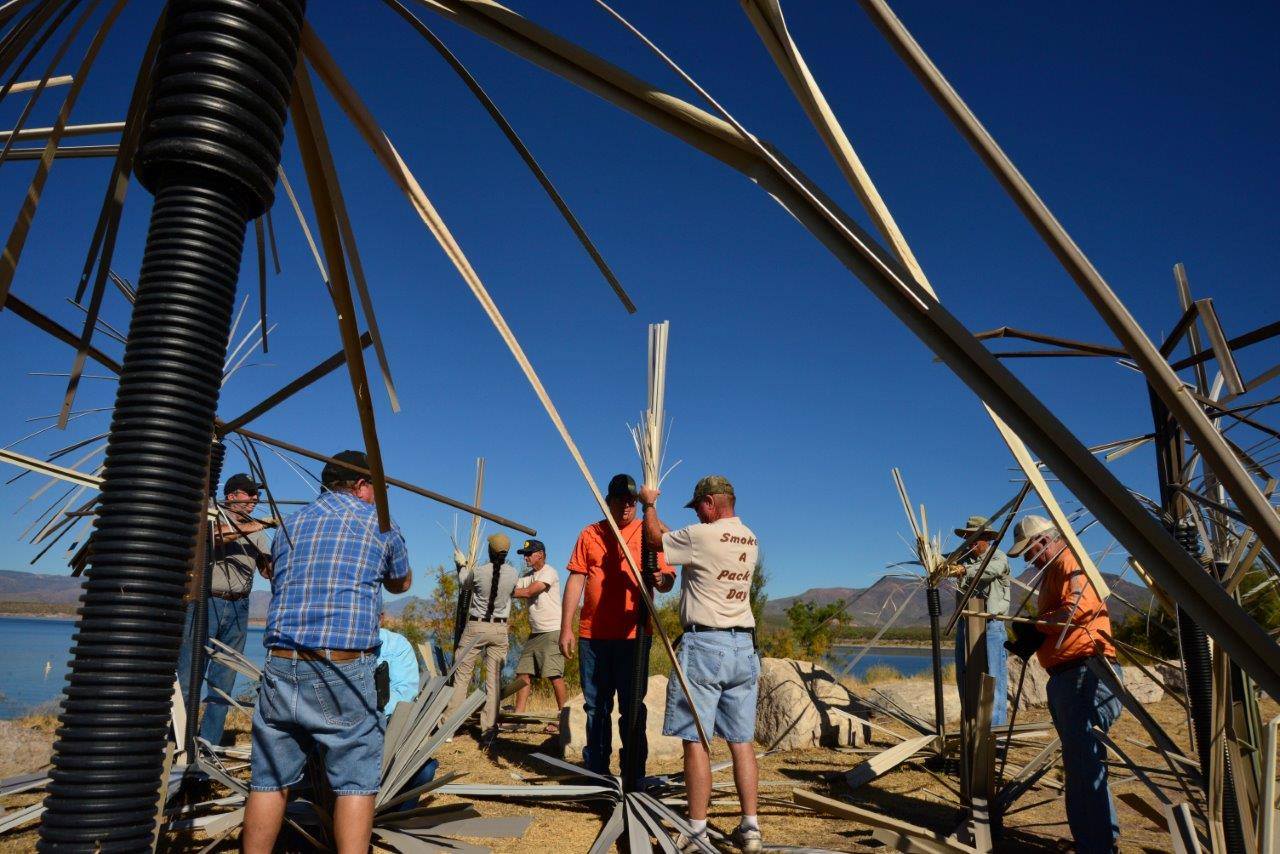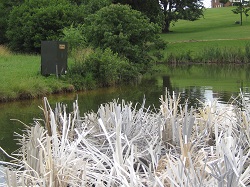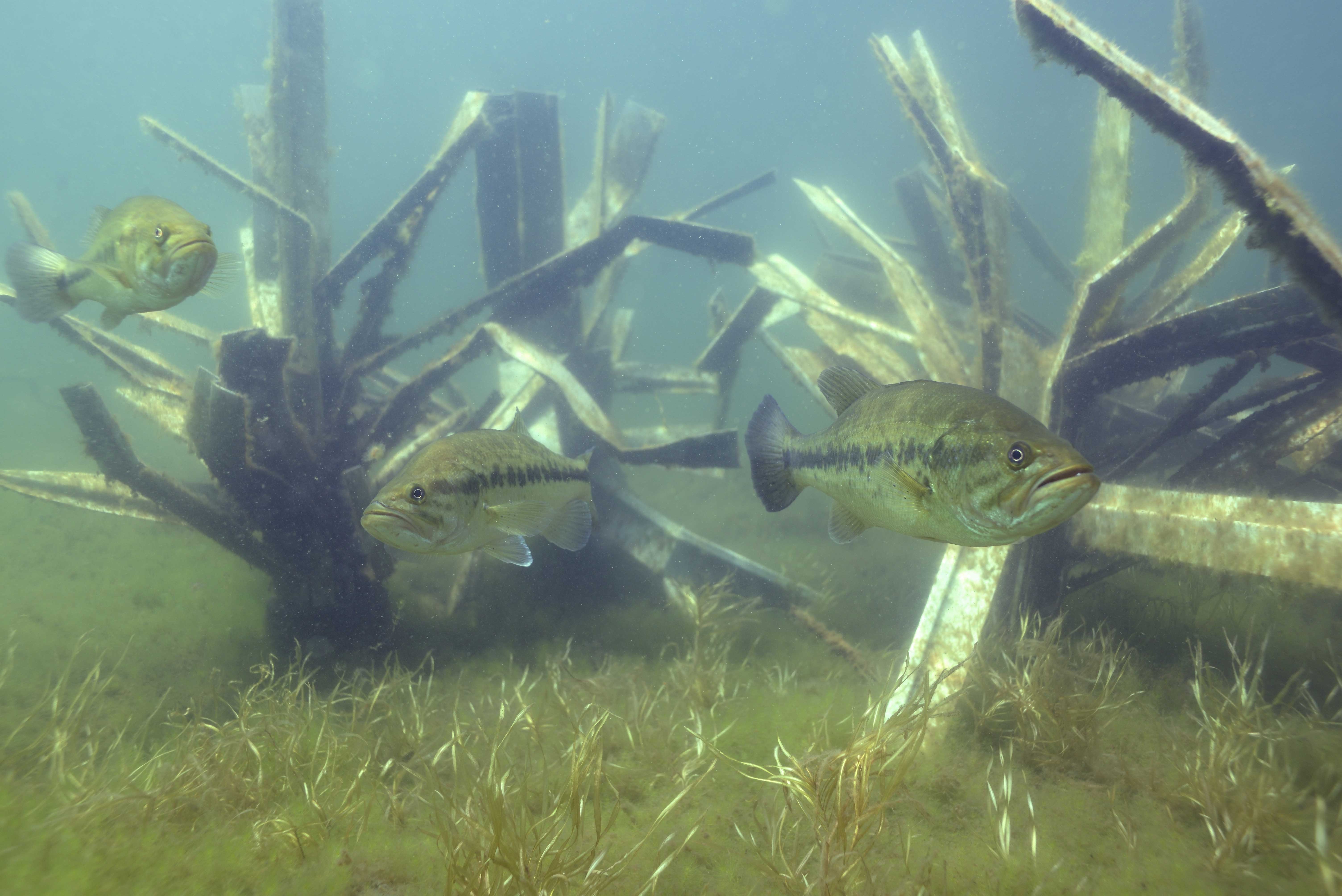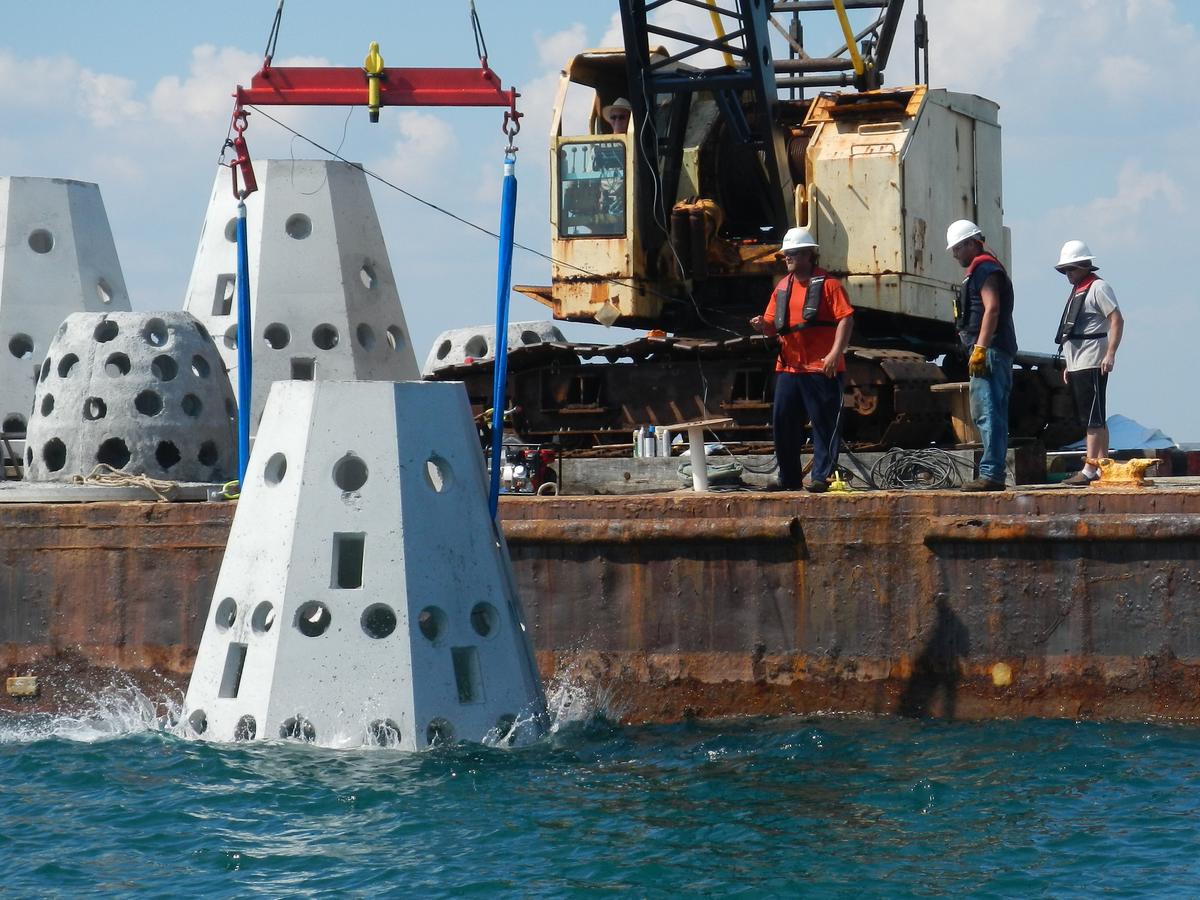Our newest, ultra dense, shallow and first ever artificial fish habitat arrangement in a reclaimed plastic barrel, holds hundreds of separate pieces of never before seen cuts and profiles of 100% reclaimed PVC habitat. We’ve found a way to display and ship our most robust habitat creations, tighter and tougher for the fish! Seven inches of thick concrete hold things together in the base and heavily weighted in the bottom of the barrel, standing up in all conditions.
Each completed Barrel habitat is unique and one of a kind, just like we find in nature. Colorful, abstract and always welcoming, fish gravitate into the thousands of individual crevices provide within the intricate and ever changing, detail.
Large footprint and extreme weight hold these towering creations in one place forever. Installation is a breeze. You can simply drag or carry them with the incorporated handles, or use a two wheel dolly cart. Once in the boat, pontoon or on the dock, you can roll them around on edge and push it into the water. It stands up no matter what, on slopes and current areas. Taller, heavier and wider options are always available, contact us today to talk about your ideas and goals.
Barrels full of fish, hiding spots and ultra dense cover, hit the water for 2021 with unmatched variety, complexity and unlimited flexibility. Ready to sink in minutes, no assembly, materials or additional tools needed, roll into water to and fish! Unlimited variety available, more sizes coming soon. Ask us about making your own custom size, shape, and included materials to design your own barrels just for your lake, dock, pond or river frontage.
These new shallow water barrels hold a myriad of hand selected cuts of reclaimed PVC, creating an entire refuge of protection inside.
Weighing just over 150 pounds each complete, they stand 48″ tall and open to a seven foot diameter.
The barrel base is 20″ in diameter and stands almost 8″ tall, full of strong cement.
The reclaimed barrels offer a sturdy and durable container that can be rolled on edge with ease.
Two included cotton rope handles, allow user to slide, lift or pull them off the dock or boat once in position.
For extreme current applications, the entire barrel can be dug in and planted like a bush, never to move from it’s original position. Coming three on a pallet, they get shipped right to your door, ready to be unfolded and HOUSE FISH THE DAY THEY ARRIVE.
